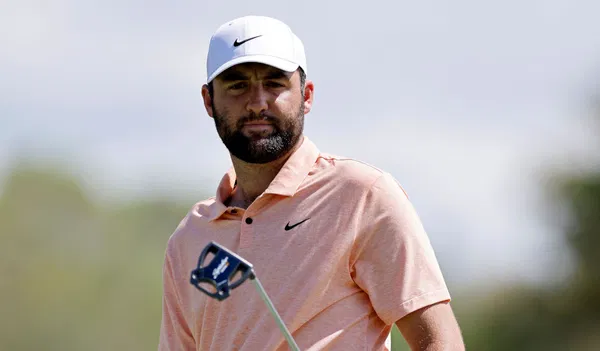
Golf has long been a sport rooted in tradition, with techniques and approaches passed down through generations. For years, players relied on instinct and experience to navigate the course—especially when reading greens. Where players once crouched, eyeballed the slope, and trusted their feel, modern golfers are now using a range of unconventional methods. Some straddle the line of their putts, feel the contours of the green with their feet, or even hold up fingers to gauge slope and break. These developments have sparked mixed reactions, especially from those who prefer the sport’s traditional roots. Amid these shifts, top golfer Scottie Scheffler has weighed in with a refreshingly grounded take on new golf technology.
Scottie Scheffler’s Calm Outlook on Golf Tech
The world’s No. 1 golfer, Scottie Scheffler, surprised many with his casual attitude toward Distance Measuring Devices (DMDs), such as laser rangefinders, during a press conference at the RBC Heritage. “You’re not going to like this answer, but I kind of forgot about that,” he remarked, referencing the PGA Tour’s ongoing trial period of DMDs at select tournaments. These devices are meant to provide precise yardages to various targets and are expected to quicken the pace of play by reducing the time spent measuring distances manually.
However, Scheffler seemed largely indifferent. He explained that he relies on his caddie, Ted Scott, for yardages and isn’t too concerned about whether or not they use the technology. He estimated that the devices might only save “a few minutes” per round, downplaying their overall impact on the pace of play. Instead, he pointed to pairings as a more meaningful factor. “When you see the biggest changes in pace of play, it all comes from going from three guys to two guys in a pairing,” he said, suggesting that the structure of play influences speed more than gadgets.
Diverging Views on Modern Golf Methods
While Scheffler has taken a practical and somewhat indifferent stance, other figures in golf have been more vocal. CBS broadcaster Jim Nantz, for instance, has openly criticized certain modern techniques like AimPoint, claiming they disrupt the natural rhythm of the game. This method, which helps players read greens by feeling the slope with their feet and holding up fingers to measure break, has sparked ongoing debate in the golfing world.
Australian golfer Min Woo Lee added fuel to the conversation when he poked fun at AimPoint after his win at the Houston Open. For an eight-inch putt, he mimicked the exaggerated finger-holding technique, clearly intending it as a joke. He later clarified on a podcast that his antics were purely for entertainment: “Doing it for the people. Just for a laugh.” His playful jab resonated with spectators and echoed some of the skepticism shared by commentators like Nantz.
Golf’s Ongoing Shift Between Tradition and Innovation
As new tools and techniques become more common, golf finds itself at a crossroads between tradition and innovation. While DMDs and green-reading systems like AimPoint offer precision and potential benefits, they also face scrutiny for altering the sport’s tempo and feel. Critics argue that these tools may undermine the skills once considered essential.
Scheffler, for his part, remains unconvinced that these tools bring significant value. He doesn’t believe DMDs will meaningfully speed up play and prefers a more old-school approach. His perspective aligns with those who see value in maintaining the traditional feel of the game, even as technology pushes boundaries.
Ultimately, the debate around modern golf tools continues. Some see them as helpful aids, while others view them as unnecessary distractions. With leading players, broadcasters, and fans weighing in from all sides, the evolution of golf remains a lively and ongoing conversation—one that continues to shape the sport’s future.